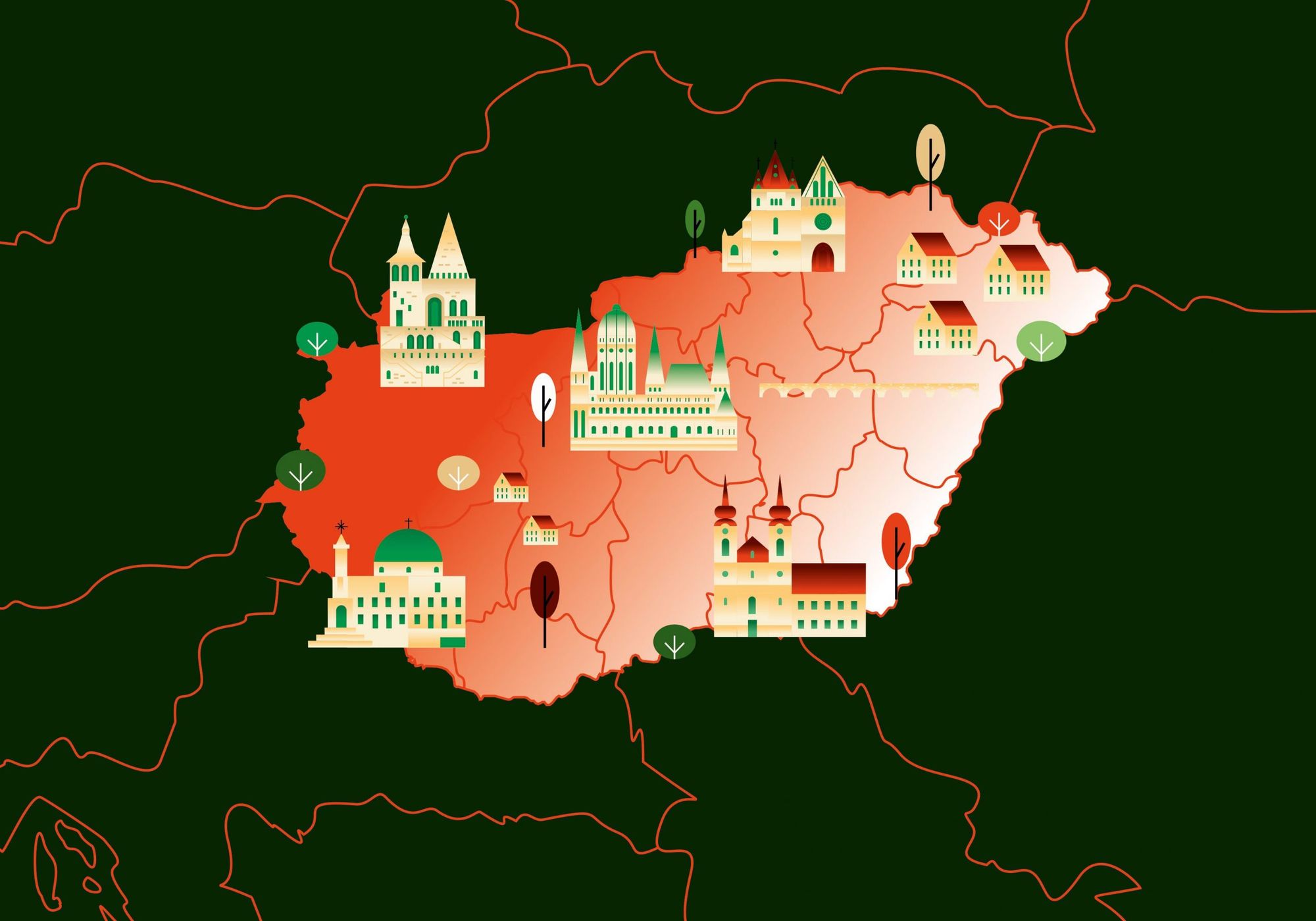More than thirty years have passed since the dissolution of the Soviet Union, which left an enormous economic and political void in Central and Eastern Europe. In this series of articles, we explore the responses of the countries of the region to the new circumstances: how they could adapt to capitalism, how successful their democratization was, and what lessons they can learn from each other. We discuss Hungary in Part VIII.
Talking about the end of communism and the democratic transition in Hungary as a Hungarian is a sensitive topic. I was born in the 21st century, but as long as I can remember, it has been a recurring topic in discussions about whether the regime change has indeed taken place or whether the political elite has only changed its clothes and we kept the attitude to power from the communist era. This is not the only disagreement; the most important political-historical event of the last 30-35 years of Hungarian history is as significant as divisive and controversial.
Already the date of the beginning of the democratic transition is questionable. Textbooks usually consider the reburial of Imre Nagy, a 1956 martyr, as the first step of the regime change. But by this logic, why do we not consider 1956 as the first breeze of change? Or why should we not deem other events that criticized the system as a turning point, such as the publication of the first Hungarian-language samizdat in 1977? According to Mihály Bihari, political scientist, and former Chief Justice, 1987 was the year that laid the foundations for the democratic transition. Three famous works critical of the system were published during the summer of that year:
- Turning point and reform
- Reform and democracy
- Social contract
The Hungarian Democratic Forum (MDF) was founded in September 1987, the first new political party born since the revolution. So, 1987 can be rightly called a turning point. In 1988 more parties were formed, protests with hundreds of thousands of people were organized, and the leadership of the ruling Marxist-Leninist party (MSZMP) significantly changed with Károly Grósz replacing János Kádár as General Secretary. But no one has said goodbye to the communist system yet.

The Polish round table discussions in the first months of 1989 were a precursor of the Hungarian democratic transition. In Hungary, the Opposition Round Table (EKA) was formed on 22 March 1989 with the not hidden aim of preparing the conditions for democratic, free elections. June was especially crucial as on 13 June, the National Round Table (NEKA) was established, which gave the MSZMP and the parties consisting of the Opposition Round Table the opportunity to negotiate. Three days later, on 16 June, Imre Nagy was reburied in a ceremony, where the most influential Hungarian politician of the 21st century, Viktor Orbán, gained nationwide popularity with his speech.
By September, the National Round Table had developed, among other things, the draft laws that would amend the constitution and determine the conditions of the parliamentary elections. In October, MSZMP, the state party, was officially dissolved with its roughly 9000 members and continued its operation as the Hungarian Socialist Party, but now within a democratic framework. On 23 October 1989, at 12:03 p.m., the Third Hungarian Republic was proclaimed, and the new, amended Constitution entered into force.
The first democratic government was led by the MDF, governing together with the Independent Smallholders’ Party and the Christian Democratic People’s Party. They wanted to achieve two main goals: a social market economy and a self-reliant society, which mainly meant privatization, market liberalism, and self-employment. The sudden economic downturn in the countries going through the democratic transition is unsurprisingly almost inevitable, as the rigid, state-controlled economic structure is undergoing such rapid change that otherwise could take decades.
Mainly large international corporations benefited from the privatization in Hungary, making the country more exposed to globalization. While in 1990, public ownership was the largest contributor to the country’s GDP (76%), followed by domestic private ownership (23%) and then foreign ownership (1%), not even a decade later, this was completely reversed. In 1998, the figure was 23% for foreign ownership, but in absolute terms, domestic private ownership dominated the Hungarian economy (51%). That year public ownership made only 23% of the contribution to the Hungarian GDP. It is a characteristic of developed countries that the bulk of their GDP is not generated by agriculture or industry but by services. However, in Hungary, in the year of the regime change (1989), the industrial sector still accounted for a slightly larger share of GDP (42.6%) than the service sector (41.8%), while the agricultural sector produced 15.6%. By 1995, the service sector had gained ground, accounting for 59.6% of the GDP, above the industrial sector’s 34%. The agricultural sector’s share fell the most, to 6.4%.
Hungary has integrated into the Western world in many respects, but some exceptions exist. The country is now a member of the EU and NATO, but the Hungarian leadership does not even plan to introduce the euro. In the 33 years passed since the regime change, both left-wing and right-wing governments have been accused of turning their backs on 1989 and wanting to build back an authoritarian or a socialist state. The socialist or social-democratic MSZP was often criticized for rescuing its predecessor’s (MSZMP) massive wealth and network. The Christian, national-conservative Fidesz has been accused of not taking into account any points of the opposition after having four consecutive two-third parliamentary majorities. This was amplified by Viktor Orbán’s famous speech at the Tusványos Festival, where he announced that he plans to build an illiberal state, interpreting illiberal on a cultural rather than on an economic ground.
Hungary, like any other country in the world, is far from perfect, and as it turned out, the democratic transition did not make it perfect either. It is undeniable that Hungarian citizens have patterns imprinted on them (or on their parents) during the communist era, and it will take several generations for Hungarian society to leave behind the second half of the 20th century in its mentality. Nonetheless, it is also unquestionable that socialism has been replaced by capitalism and the one-party system with democracy.
The last part of the series is available here.

Hundreds of artworks available at great prices in two Budapest galleries











